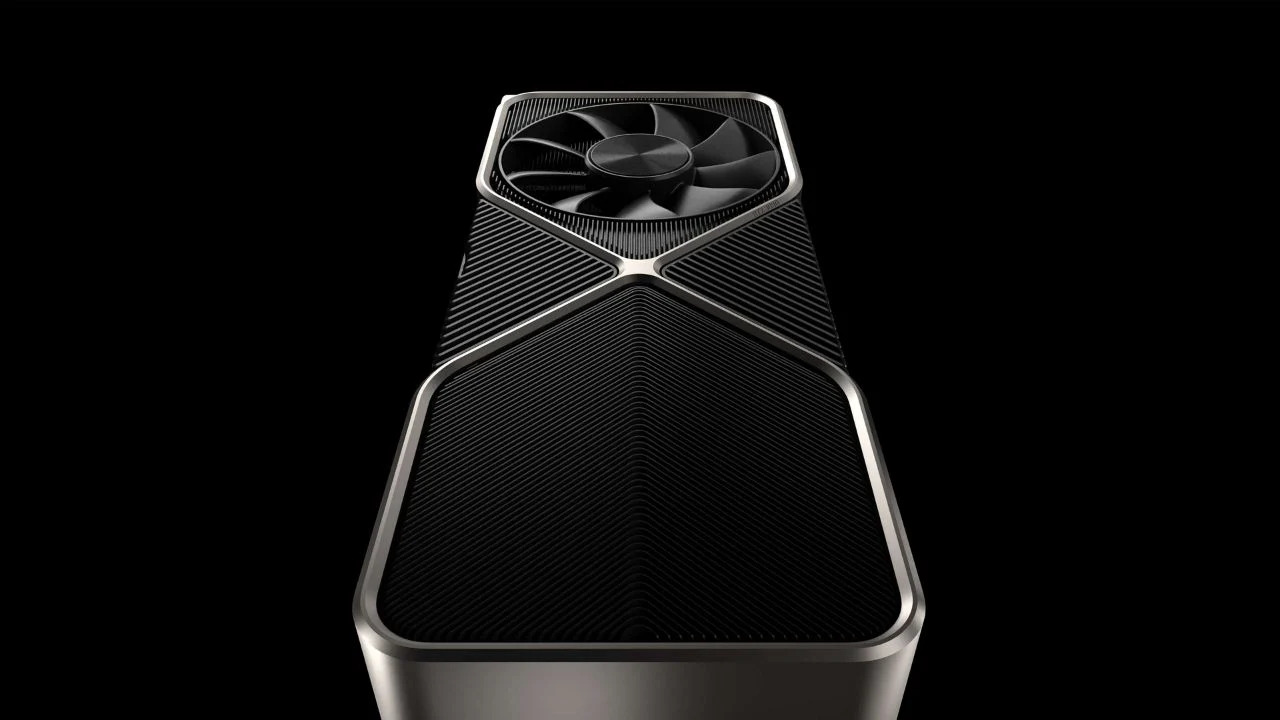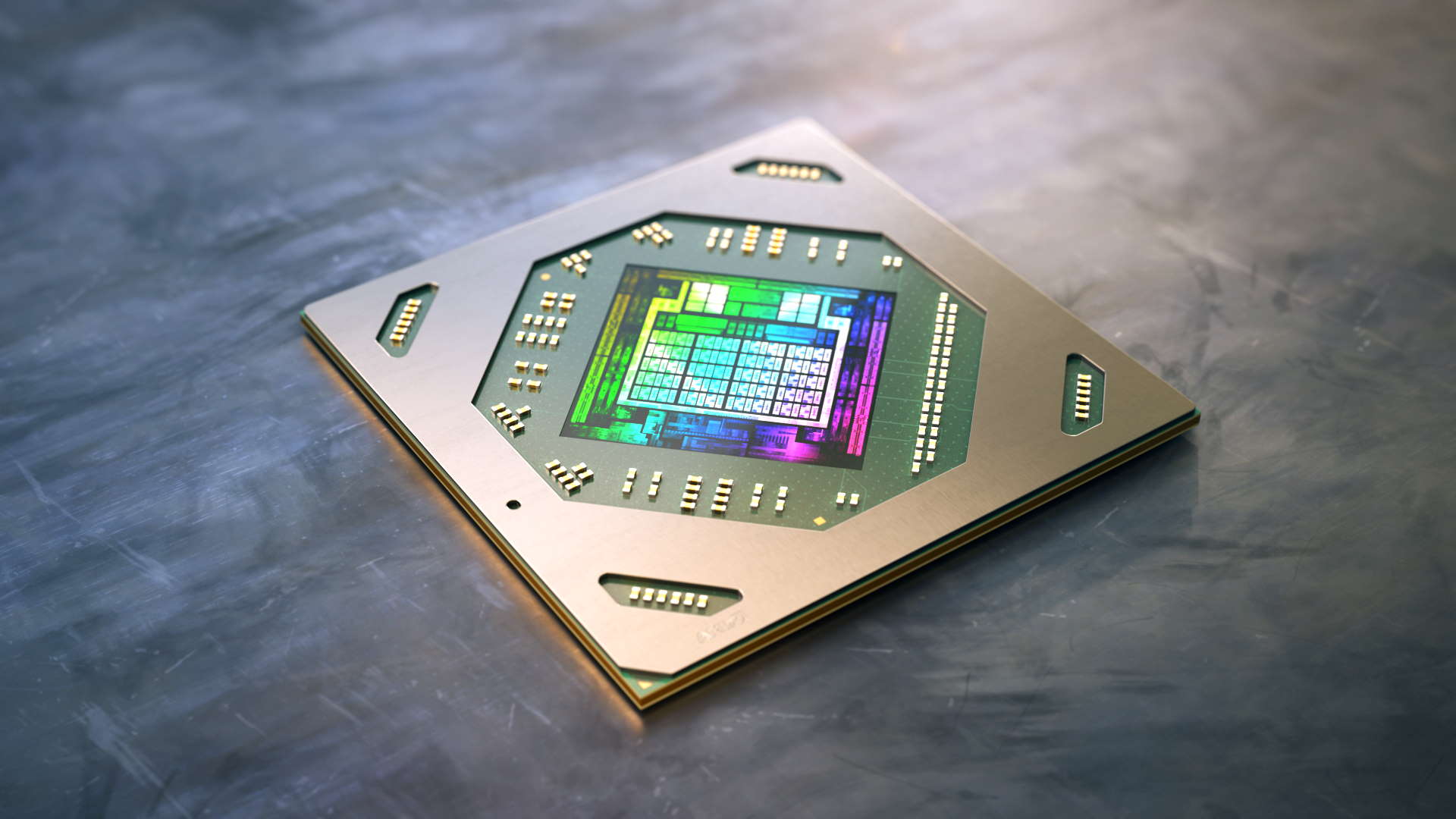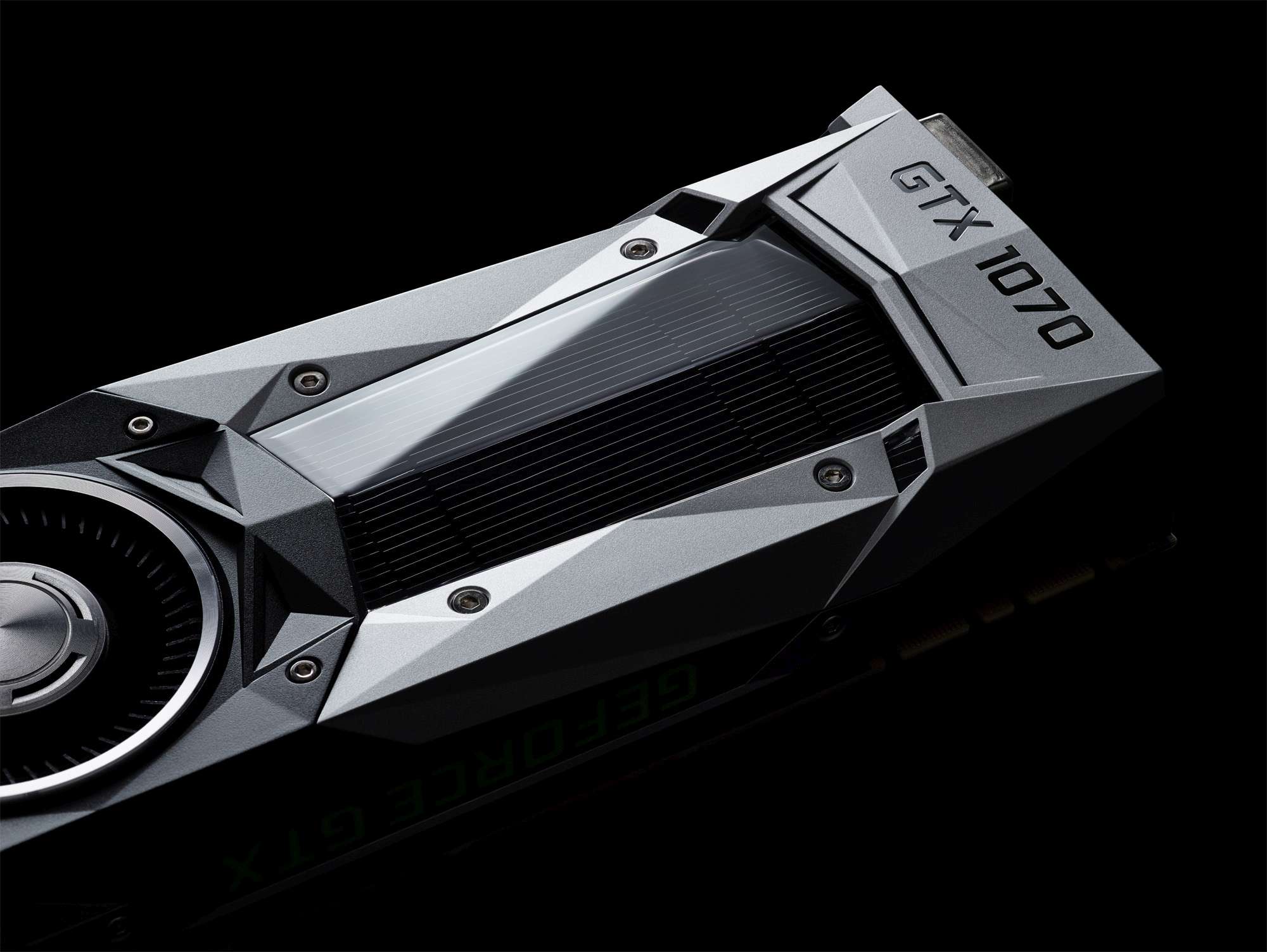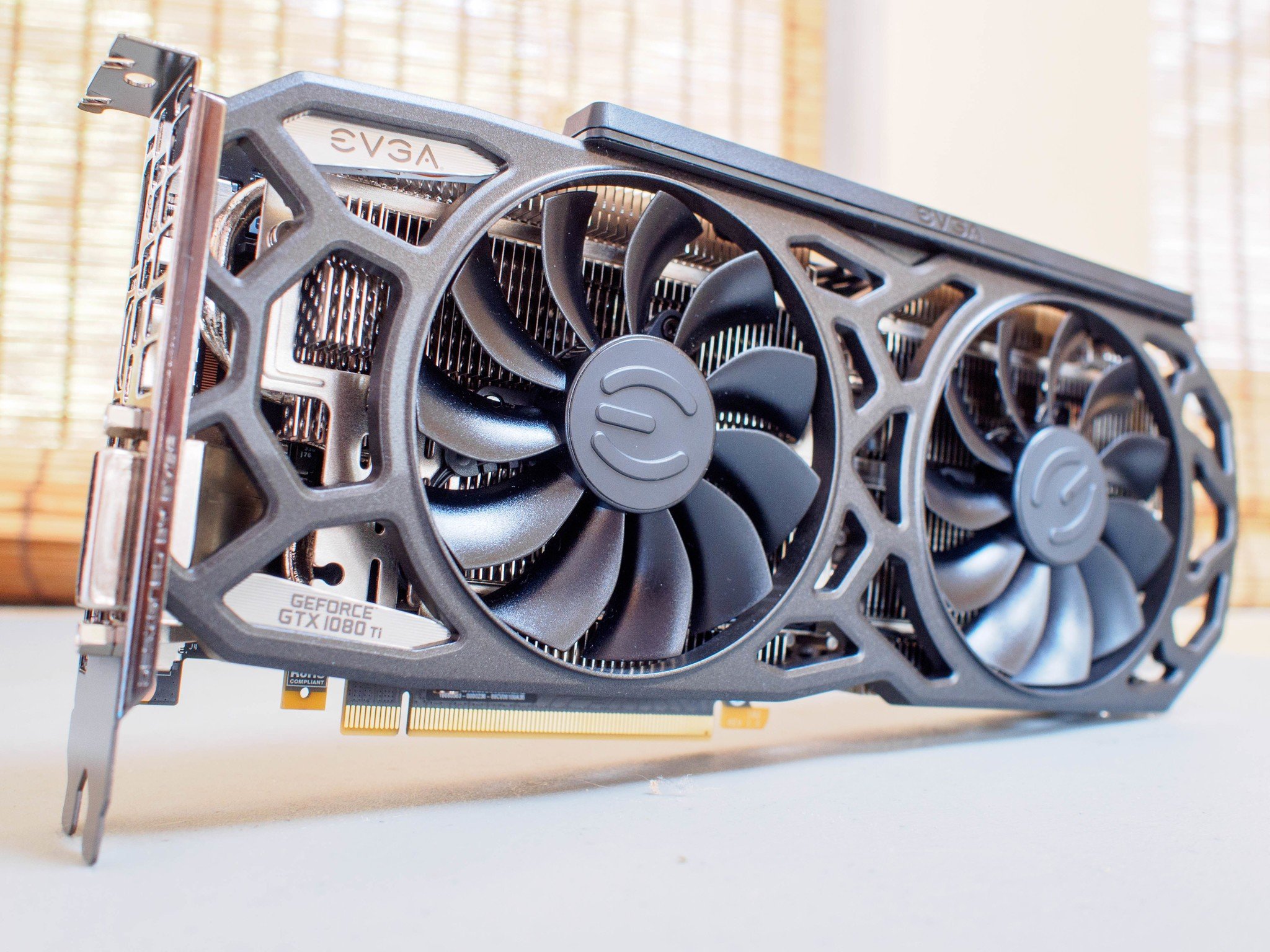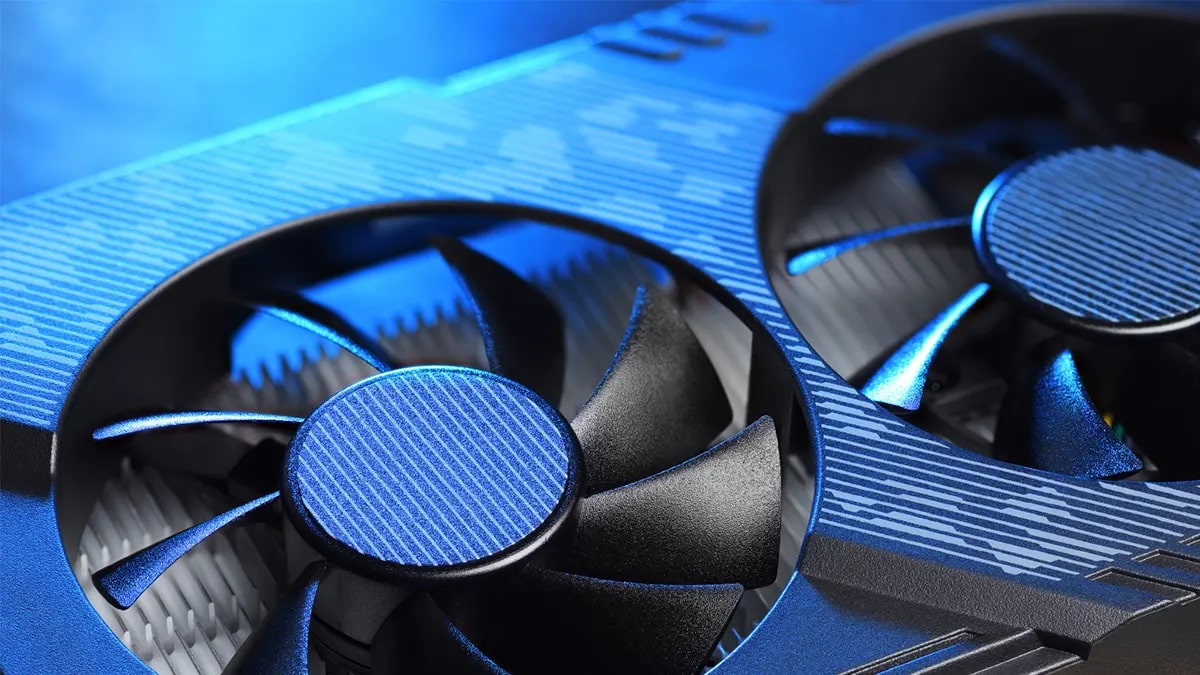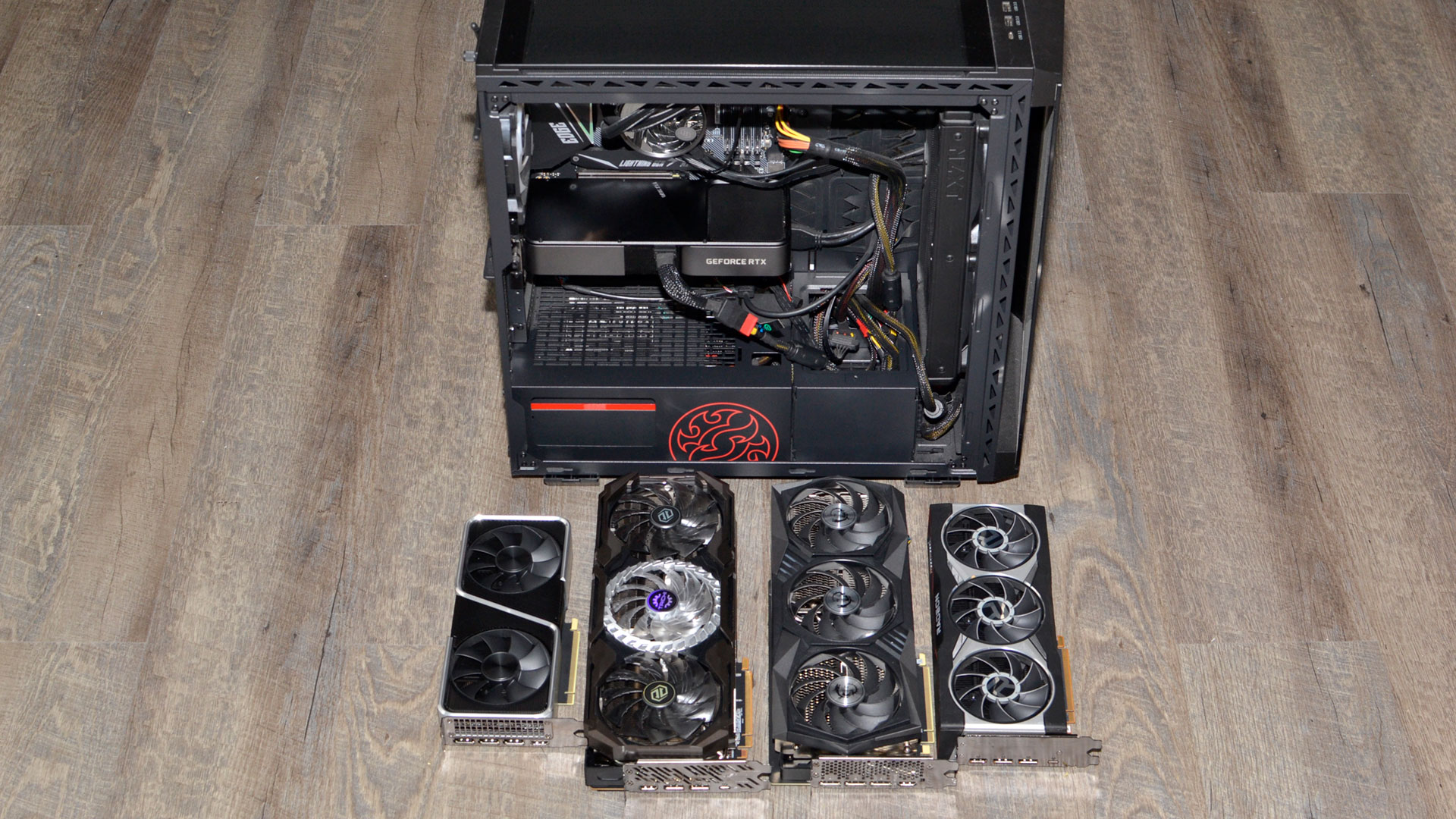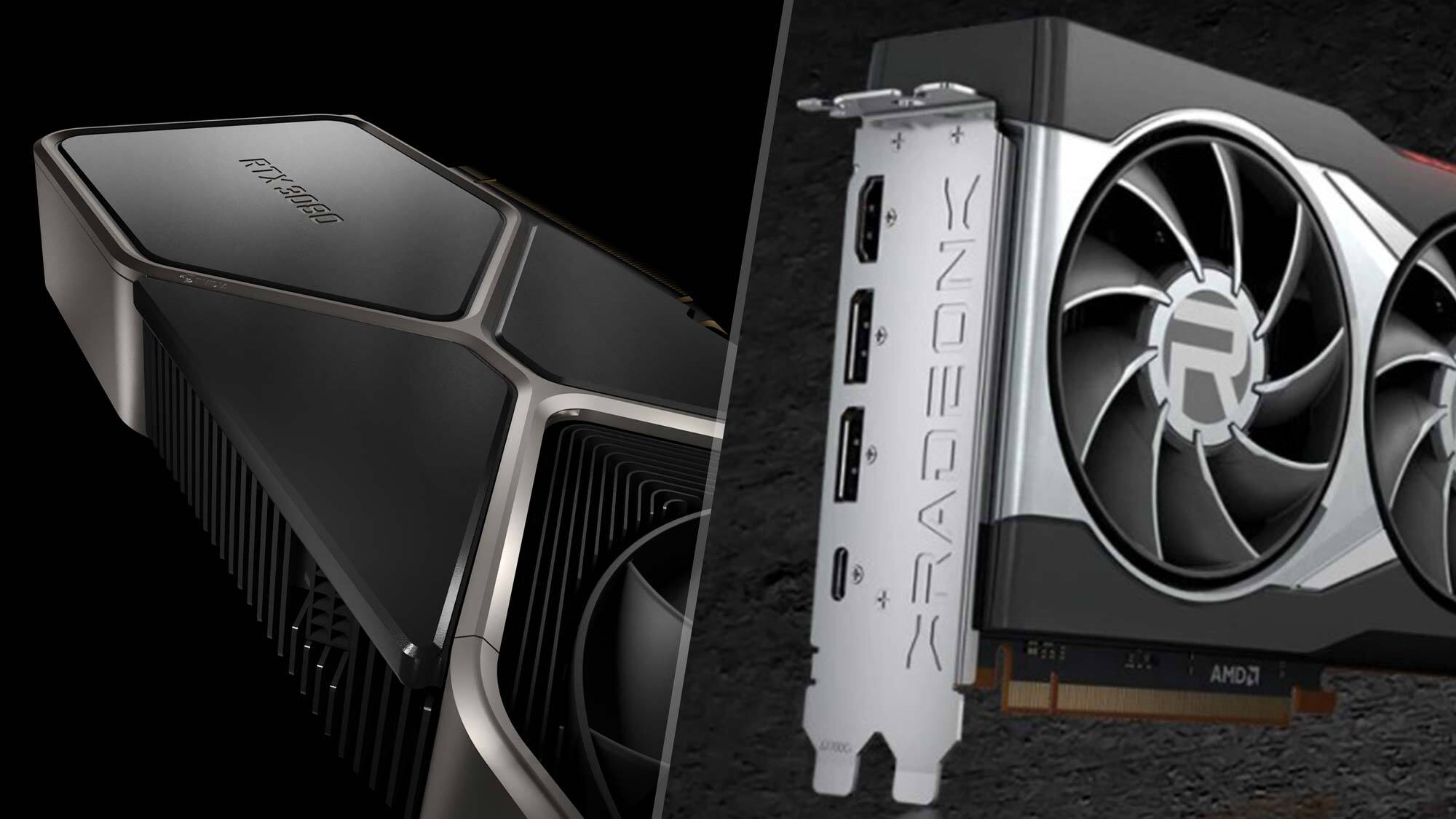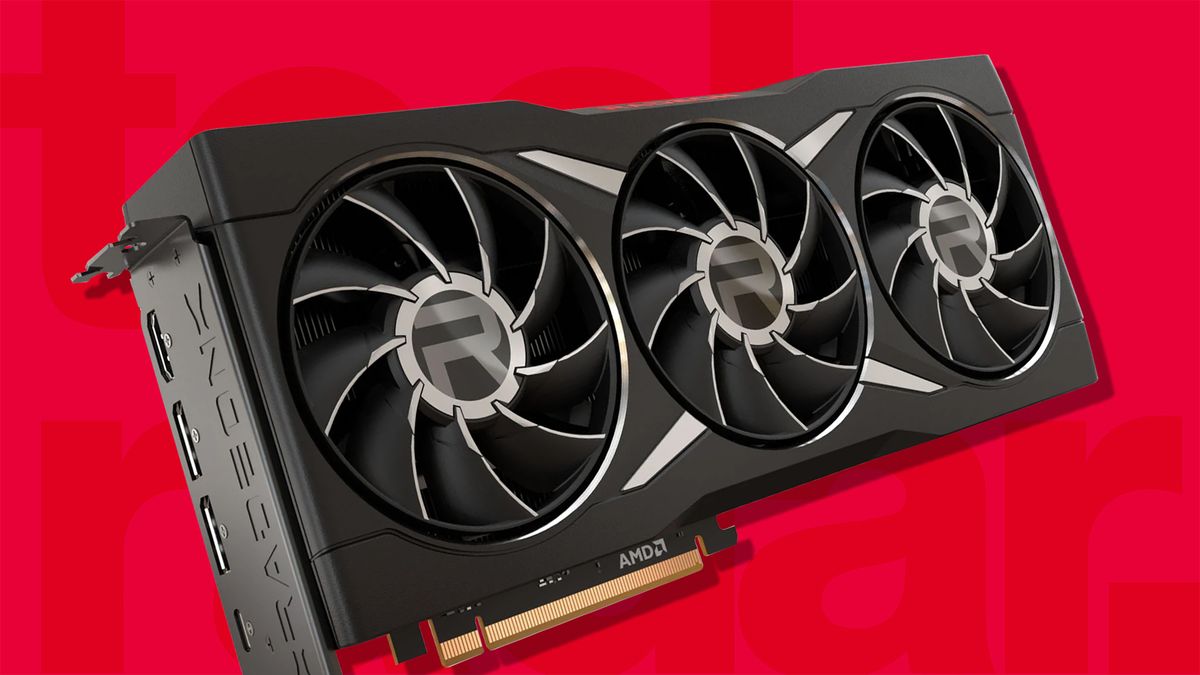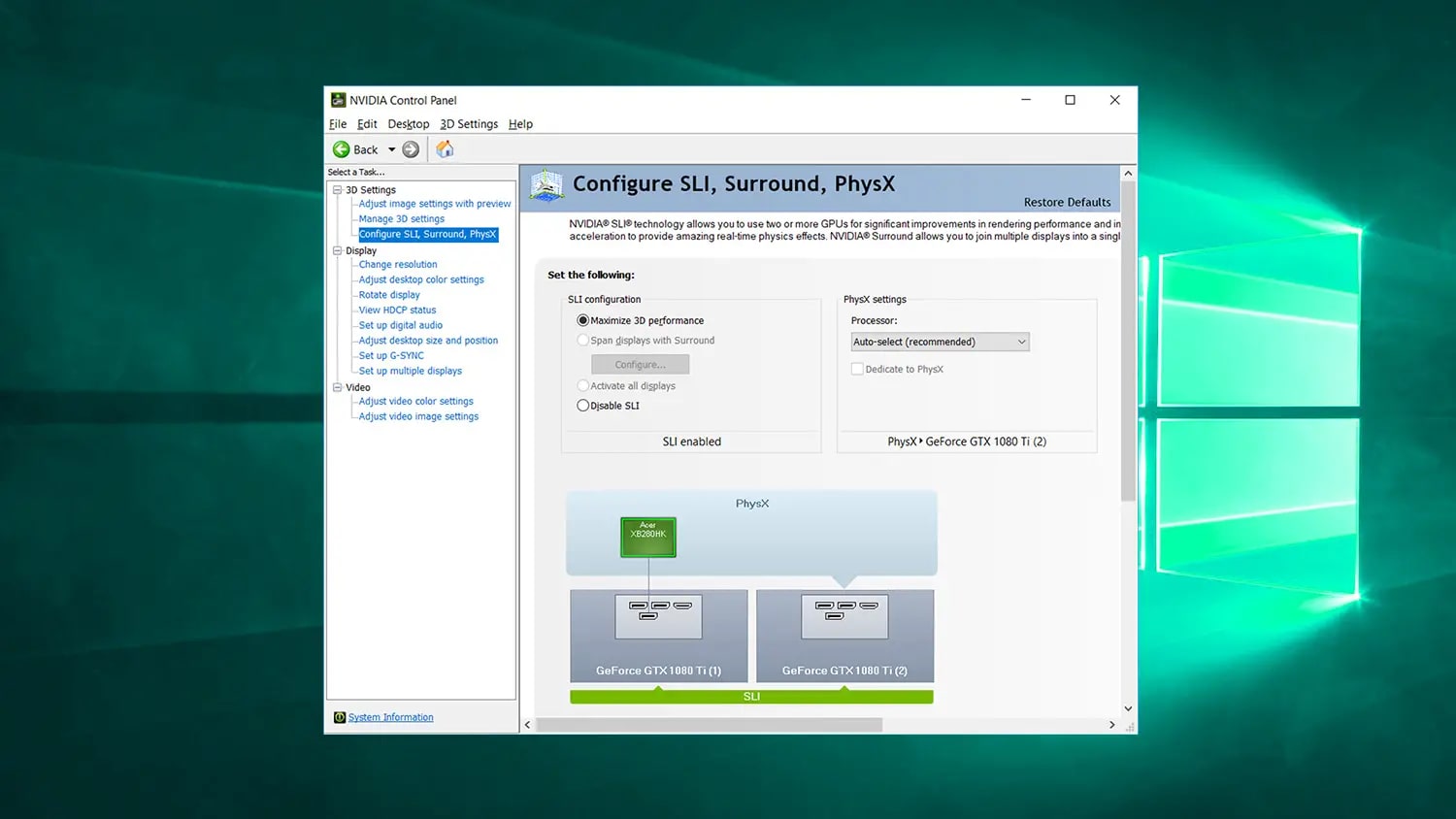Introduction
Welcome to the world of Nvidia graphics cards! If you’re a PC enthusiast or a gamer, you’ve probably heard of Nvidia and their reputation for producing high-performance graphics cards. In this article, we will explore what makes Nvidia graphics cards so coveted and help you understand the factors to consider when choosing the best one for your needs.
Graphics cards, also known as video cards or GPUs (Graphics Processing Units), are essential components of modern computers. They are responsible for rendering images, animations, and videos on your screen. A powerful graphics card can greatly enhance your gaming experience, enabling you to enjoy visually stunning graphics, smooth frame rates, and realistic 3D effects.
When it comes to graphics cards, Nvidia is a name that stands out in the industry. They have been at the forefront of developing cutting-edge GPUs for over two decades. With their dedication to innovation and commitment to delivering top-notch performance, Nvidia has earned the trust and admiration of gamers, professionals, and tech enthusiasts alike.
So, what sets Nvidia apart from its competitors? One of the key reasons is their expertise in designing powerful GPU architectures, such as the GeForce series. Nvidia’s GPUs are built with advanced technologies and optimized for various applications, including gaming, content creation, virtual reality, and artificial intelligence.
When choosing the best Nvidia graphics card for your needs, there are several factors to take into consideration. These include performance, price, power consumption, VRAM capacity, cooling capabilities, compatibility with your system, and your specific gaming or professional requirements. By evaluating these factors, you can make an informed decision and find the perfect Nvidia graphics card that meets your needs and budget.
In the following sections, we will delve deeper into each of these factors, comparing popular Nvidia graphics cards and providing insights to help you make the right choice for your gaming or professional endeavors.
What is a graphics card?
A graphics card, also known as a video card or GPU (Graphics Processing Unit), is a vital component of a computer that is responsible for rendering and displaying visual content on a monitor. It acts as a bridge between the CPU (Central Processing Unit) and the monitor, working in tandem to deliver images, videos, and animations in different resolutions and graphics settings.
The primary function of a graphics card is to process and manipulate the graphical data received from the CPU. It performs complex calculations and transformations to generate the pixels that make up images. This process involves rendering 3D models, applying textures and lighting effects, and ultimately producing the final image that you see on your screen.
Graphics cards play a crucial role in various applications, but they are especially essential in gaming. As games become more visually demanding, a capable graphics card is necessary to deliver smooth frame rates and realistic graphics. It directly affects the overall gaming experience, enabling players to enjoy immersive worlds, detailed environments, and stunning visual effects.
Modern graphics cards are equipped with specialized GPU cores that are designed for parallel processing. This means they can handle multiple calculations simultaneously, efficiently handling the complex mathematical operations required for graphics rendering. The higher the number of GPU cores, the more powerful and efficient the graphics card is.
In addition to gaming, graphics cards find applications in other fields such as video editing, 3D modeling, machine learning, and scientific simulations. These tasks require immense computational power, which can be provided by high-end graphics cards.
Over the years, graphics card technology has advanced at a rapid pace. Manufacturers like Nvidia invest heavily in research and development to introduce new GPU architectures and innovative features. These advancements result in graphics cards with higher performance, improved power efficiency, and enhanced capabilities.
Now that we understand the importance of graphics cards and their role in delivering captivating visuals, let’s explore why Nvidia has become a go-to choice for many enthusiasts and gamers when it comes to graphics card options.
Why is Nvidia a popular choice for graphics cards?
Nvidia has established itself as a market leader in the graphics card industry, earning a reputation for producing top-notch GPUs that deliver unparalleled performance. There are several reasons why Nvidia has become a popular choice among gamers, professionals, and PC enthusiasts alike:
- Powerful and efficient GPU architectures: Nvidia has pioneered the development of GPU architectures that push the boundaries of performance and efficiency. Their GeForce series, based on architectures like Turing and Ampere, incorporate advanced features like ray tracing and artificial intelligence capabilities. These technologies significantly enhance the visual quality of games and other graphic-intensive applications.
- Wide range of graphics card options: Nvidia offers a diverse lineup of graphics cards that cater to different needs and budgets. From entry-level cards for casual gamers to high-end models for enthusiasts and professionals, Nvidia covers a broad spectrum of requirements. This range of options ensures that there is an Nvidia graphics card suitable for every user.
- Driver support and software features: Nvidia provides excellent driver support for their graphics cards, regularly releasing updates that improve performance, stability, and compatibility. They also offer additional software features like GeForce Experience, which provides an intuitive interface to optimize game settings, capture gameplay footage, and stream content.
- Strong partnerships and developer support: Nvidia has forged partnerships with game developers and software companies to optimize their products for Nvidia graphics cards. This cooperation ensures that Nvidia users can benefit from enhanced performance and compatibility with popular games and applications.
- Reliability and longevity: Nvidia graphics cards are known for their reliability and longevity. They are built with high-quality components, undergo rigorous testing, and are designed to withstand demanding computing tasks over extended periods. This reliability makes Nvidia graphics cards a wise investment for users who want a durable and long-lasting solution.
These factors have contributed to Nvidia’s widespread popularity among consumers and professionals in the graphics card market. The company’s commitment to innovation, performance, and user satisfaction has reinforced their position as a leading graphics card manufacturer.
Now that we understand why Nvidia is highly regarded, let’s dive into the factors you should consider when choosing the best Nvidia graphics card for your specific needs.
Factors to consider when choosing the best Nvidia graphics card
Choosing the best Nvidia graphics card can be a challenging task, considering the wide array of options available. To help you make an informed decision, here are some key factors to consider:
- Performance: The performance of a graphics card is crucial, especially for gamers and professionals. Look for benchmarks and reviews to determine a card’s gaming or rendering capabilities. Consider factors such as core count, clock speed, and memory bandwidth to gauge its performance potential.
- Price: Price is an important consideration for most buyers. Different Nvidia graphics cards come at varying price points, so it’s essential to determine your budget and find a card that offers good value for money in terms of its performance and features.
- Power consumption: Graphics cards can consume a significant amount of power, so it’s essential to consider the power requirements of the card and ensure your power supply can handle it. Opt for cards that offer good performance while being power-efficient to minimize energy consumption and reduce electricity costs.
- VRAM (Video Random Access Memory): VRAM is dedicated memory on the graphics card that stores data for quick access by the GPU. More VRAM allows for better performance at higher resolutions and with more complex textures. Consider the VRAM capacity of the card based on your intended usage, such as gaming or content creation.
- Cooling and noise levels: Graphics cards generate heat during operation, so efficient cooling is crucial to prevent overheating and maintain optimal performance. Look for cards with robust cooling solutions, such as custom cooling fans or liquid cooling systems, to ensure efficient heat dissipation. Additionally, consider the noise levels produced by the card’s cooling system, especially if you prefer a quieter computing environment.
- Compatibility and system requirements: Take into account the compatibility of the graphics card with your motherboard, power supply, and other hardware components. Ensure that your system can provide the necessary connections and power required for the card to function optimally.
- Gaming requirements: If you’re primarily a gamer, consider the specific gaming requirements you have. Determine the resolution and refresh rate of your monitor, as well as the types of games you play. This will help you identify the appropriate level of performance and features you need in a graphics card.
- Future-proofing: Graphics card technology continues to evolve rapidly. While you can’t predict future advancements, consider choosing a card that offers a good balance between current performance and future-proofing. Look for features like hardware support for new technologies and compatibility with upcoming software developments.
By carefully considering these factors and assessing your specific needs, you’ll be better equipped to choose the best Nvidia graphics card that provides excellent performance, value, and compatibility for your computer setup.
#1. Performance
When it comes to graphics cards, performance is a critical factor to consider. The performance of an Nvidia graphics card directly impacts the quality of your gaming experience, as well as the speed and efficiency of tasks like video editing and 3D rendering. Here are a few key aspects to evaluate when assessing the performance of an Nvidia graphics card:
- GPU Architecture: Nvidia constantly introduces new GPU architectures, such as Turing and Ampere, which bring significant advancements in performance and efficiency. Each architecture comes with its own set of features and improvements, so it’s important to research and understand the benefits they offer.
- Core Count and Clock Speed: The number of GPU cores and their clock speed contribute to the overall performance of a graphics card. More GPU cores allow for parallel processing, enabling faster rendering of complex graphics. Higher clock speeds result in quicker calculations and smoother gameplay.
- Memory Bandwidth: Memory bandwidth determines how quickly the GPU can access data stored in its memory. A higher memory bandwidth allows for faster data transfer, resulting in improved performance, especially in memory-intensive applications.
- Overclocking Potential: Overclocking is the process of increasing the clock speed of a graphics card beyond its factory settings. Some Nvidia graphics cards offer better overclocking potential, allowing users to squeeze out additional performance by manually adjusting settings. However, it’s essential to ensure proper cooling and stability when overclocking a graphics card.
- Benchmark Scores and Reviews: To get an accurate measure of a graphics card’s performance, look for benchmark scores and reviews from reputable sources. These tests evaluate the card’s performance in various scenarios and offer insights into how it compares to other models in the market.
- Resolution and Refresh Rate: Consider your monitor’s resolution and refresh rate when assessing the performance requirements for your graphics card. Higher resolutions and refresh rates demand more graphics processing power to deliver smooth gameplay and crisp visuals.
Ultimately, the performance of an Nvidia graphics card depends on your specific requirements and usage scenarios. Consider the performance factors mentioned above and evaluate how they align with your gaming, content creation, or professional needs. By finding the right balance between performance and budget, you can choose an Nvidia graphics card that provides the best possible performance for your specific use cases.
#2. Price
Price is a crucial factor to consider when choosing an Nvidia graphics card. The price range of graphics cards can vary significantly, and it’s essential to find a balance between your budget and the performance you require. Here are a few key considerations regarding price:
- Budget: Determine your budget for a graphics card before starting your search. Having a clear budget in mind will help you narrow down your options and focus on cards within your price range.
- Performance-to-Price Ratio: Consider the performance-to-price ratio of a graphics card. This ratio helps you evaluate the value you’re getting for the price you’re paying. It’s important to compare the performance capabilities of different cards in a similar price range to make an informed decision.
- Current Market Value: Keep an eye on the current market value of Nvidia graphics cards. Prices may fluctuate due to factors like availability, demand, and new product releases. Research the market price trends and compare prices from different retailers to ensure you’re getting the best deal.
- Used or Previous Generation Models: If you’re on a tight budget, consider purchasing a used or previous generation Nvidia graphics card. These cards often offer good performance at a lower price. However, ensure that the card is in good condition and has a warranty or return policy.
- Future Upgrades: If you plan on upgrading your graphics card in the future, it may be worth investing in a slightly higher-priced model with better performance and more features. This allows your graphics card to remain relevant for a longer period before needing an upgrade.
It’s important to strike a balance between your budget and the performance you require. While it can be tempting to opt for the latest and most expensive graphics card, it may not always be necessary for your specific needs. Consider your gaming or professional requirements and choose a graphics card that provides the best value for your budget.
Remember that the initial cost of a graphics card is not the only expense to consider. Factor in any additional costs, such as power requirements, aftermarket cooler options, or any accessories that may be needed for installation or compatibility.
By carefully assessing your budget and considering the value a graphics card offers in terms of performance and features, you can find the right Nvidia graphics card that meets your needs without breaking the bank.
#3. Power consumption
Power consumption is an important consideration when choosing an Nvidia graphics card, as it directly impacts your electricity bill and the overall power efficiency of your system. Here are some key factors to consider regarding power consumption:
- TDP (Thermal Design Power): TDP is a measure of the maximum amount of power a graphics card can draw under normal operating conditions. It is expressed in watts and indicates the power usage and heat generation of the card. Lower TDP values indicate better power efficiency.
- Efficient Architecture: Nvidia has made significant strides in improving the power efficiency of their graphics card architectures. Newer architectures, such as Turing and Ampere, offer better performance per watt compared to previous generations, resulting in reduced power consumption for the same level of performance.
- Power Supply Requirements: Consider the power supply requirements of the graphics card you plan to purchase. Ensure that your power supply unit (PSU) has the necessary wattage and appropriate connectors to support the graphics card. It’s important to have some headroom in terms of power supply capacity to accommodate peak power demands.
- Power Limiting Options: Some Nvidia graphics cards offer power limiting options through software. These options allow you to adjust the power consumption and performance of the card, giving you control over the trade-off between power usage and performance.
- Manufacturer Specifications: Review the manufacturer’s specifications for the graphics card to determine its power requirements. This information will help you assess its power consumption and its compatibility with your system’s power capabilities.
- Cooling Considerations: Higher-powered graphics cards tend to generate more heat. Ensure that your system has adequate cooling solutions, such as proper airflow and cooling fans, to maintain optimal operating temperatures. Effective cooling not only helps with performance but also prolongs the lifespan of your graphics card.
By choosing an Nvidia graphics card with lower power consumption, you can reduce energy costs and minimize your carbon footprint, while still enjoying high-quality graphics performance. It’s worth noting that power efficiency and performance are often a trade-off, so finding the right balance is important.
Consider your specific usage scenarios and requirements when assessing power consumption. If you prioritize power efficiency or have a limited power supply, opt for Nvidia graphics cards known for their energy efficiency. On the other hand, if you require higher performance for demanding tasks, be prepared for slightly higher power consumption.
By carefully considering the power consumption of an Nvidia graphics card and ensuring it aligns with your system’s capabilities and your energy efficiency preferences, you can make an informed decision and choose a graphics card that meets your power needs.
#4. VRAM (Video Random Access Memory)
VRAM, or Video Random Access Memory, is an important consideration when choosing an Nvidia graphics card. VRAM plays a crucial role in storing and accessing data that the graphics card needs for rendering images, textures, and other visual elements. Here are some key factors to consider regarding VRAM:
- VRAM Capacity: The capacity of VRAM determines how much data the graphics card can store and access quickly. Higher VRAM capacity allows for better performance, especially when working with high-resolution textures and complex scenes. Consider the resolutions you typically work with and the requirements of the applications you use to determine the optimal VRAM capacity for your needs.
- Resolution and Texture Quality: Higher resolutions and higher texture quality settings require more VRAM to store the necessary data. If you plan on gaming or working with graphics-intensive applications at high resolutions, consider a graphics card with ample VRAM capacity. This ensures smooth performance without sacrificing visual quality.
- Multi-Monitor or VR Setups: If you intend to use multiple monitors or VR (Virtual Reality) headsets, it’s important to consider the VRAM requirements. Running multiple displays or utilizing VR technology typically requires more VRAM to handle the increased graphical workload. Ensure that the graphics card you choose has sufficient VRAM to support your multi-monitor or VR setup.
- Memory Bandwidth: VRAM capacity alone is not the sole determinant of performance. Consider the memory bandwidth of the graphics card, as it affects the speed at which the GPU can access the VRAM. Higher memory bandwidth allows for faster data transfer, resulting in smoother performance, especially in memory-intensive tasks.
- GDDR6 or GDDR6X: Nvidia graphics cards utilize GDDR6 or GDDR6X memory technology, which offers higher bandwidth and improved performance compared to previous generations. Consider the type of VRAM used in the graphics card you are considering, as it directly impacts memory performance and can affect overall graphics card performance.
When evaluating VRAM requirements, it’s essential to strike a balance between VRAM capacity and your specific usage scenarios. While having more VRAM can provide better performance and versatility, it’s important to consider your budget and the actual needs of your applications or games. Investing in excessive VRAM capacity that you won’t fully utilize may not provide a significant boost in performance.
Remember that VRAM alone does not guarantee better graphics performance. It works in conjunction with other factors, such as the GPU architecture and memory bandwidth. It’s crucial to consider these factors collectively to make an informed decision regarding the VRAM capacity of your Nvidia graphics card.
By evaluating your usage requirements, considering the resolutions and texture quality you work with, and balancing it with your budget, you can choose an Nvidia graphics card with the optimal VRAM capacity to deliver the performance you need.
#5. Cooling and noise levels
Cooling and noise levels are important factors to consider when choosing an Nvidia graphics card. Efficient cooling not only keeps the graphics card operating at optimal temperatures but also ensures its longevity and performance. Additionally, noise levels generated by the cooling system can impact the overall comfort and user experience. Here are some key considerations regarding cooling and noise levels:
- Cooling Solutions: Nvidia graphics cards come with various cooling solutions, including custom cooling fans, heat sinks, and even liquid cooling options. Consider the type of cooling solution offered by the graphics card you are considering. Advanced cooling solutions generally offer better heat dissipation, allowing the graphics card to operate at lower temperatures.
- Cooling Performance: Look for graphics cards with efficient cooling performance. This ensures that the graphics card can maintain optimal operating temperatures even during intense computing tasks or extended gaming sessions. Consider reviews and benchmarks that evaluate the cooling performance of different models to make an informed decision.
- Noise Levels: Cooling systems can generate noise due to the operation of fans or pumps. If you prioritize a quieter computing environment, consider graphics cards with low-noise cooling solutions or custom designs that prioritize noise reduction. Look for reviews that specifically mention noise levels to gauge the quietness of the graphics card’s cooling system.
- Form Factor: Consider the size and form factor of the graphics card, especially if you have space constraints in your system. Larger graphics cards often come with larger cooling systems, which can result in improved cooling performance but may require more space in your case.
- Aftermarket Cooling: If cooling and noise levels are a top priority for you, consider aftermarket cooling solutions such as custom cooling fans, liquid cooling kits, or GPU water blocks. These solutions can provide even better cooling performance and reduced noise levels, but they may require additional cost and effort to install.
- Cooling Software: Some graphics cards come with software that allows you to monitor and control the cooling system. This software can provide insight into the temperature and fan speed of the graphics card, as well as the ability to customize fan curves or adjust cooling settings for optimal performance and noise levels.
Choosing a graphics card with efficient cooling and noise levels ensures that your system runs smoothly, without the risk of overheating or being disruptive due to excessive noise. Consider your priorities in terms of cooling performance and noise levels to find the right balance that suits your needs.
Keep in mind that cooling performance and noise levels can be influenced by factors beyond the graphics card itself, such as the airflow in your PC case and the ambient temperature of your environment. It’s important to maintain proper airflow and adequate cooling in your system as a whole to maximize the effectiveness of the graphics card’s cooling solution.
By considering the cooling performance, noise levels, form factor, and potential for aftermarket cooling solutions, you can choose an Nvidia graphics card that provides efficient cooling and a comfortable operating environment for your system.
#6. Compatibility and system requirements
Compatibility and system requirements are crucial considerations when selecting an Nvidia graphics card. It’s essential to ensure that the graphics card you choose is compatible with your system’s hardware, such as the motherboard, power supply, and available expansion slots. Here are some key factors to consider regarding compatibility and system requirements:
- Form Factor: Check the physical dimensions of the graphics card to ensure it fits within your computer case. Graphics cards come in various form factors, such as full-size, compact, or low-profile, so choose one that is compatible with your case size and design.
- PCIe Compatibility: Consider the PCIe (Peripheral Component Interconnect Express) version supported by your motherboard. Most modern graphics cards use PCIe x16 slots, but older motherboards may have different PCIe versions or limitations. Ensure that your motherboard supports the necessary PCIe version for the graphics card you want to purchase.
- Power Supply: Check the power requirements of the graphics card and ensure that your power supply unit (PSU) can handle it. Graphics cards with higher performance tend to require more power. Ensure that your PSU has the necessary wattage and the appropriate connectors, such as PCIe power connectors, to power the graphics card.
- Additional Power Connectors: Some high-end graphics cards may require additional power connectors, such as 8-pin or 6-pin PCIe power connectors, in addition to the power supplied through the motherboard’s PCIe slot. Ensure that your PSU has the required connectors available to power the graphics card properly.
- Driver Support: Check the driver support for the graphics card. Nvidia regularly releases driver updates that improve performance, fix bugs, and ensure compatibility with the latest operating systems and applications. Ensure that the graphics card you choose is supported by the latest Nvidia drivers.
- Operating System Compatibility: Verify that the graphics card is compatible with your operating system. Nvidia provides drivers for various operating systems, including Windows, macOS, and Linux. Ensure that the graphics card you choose has driver support for your specific operating system.
- Available Ports: Check the available display ports on the graphics card and ensure they match the requirements of your monitor or displays. Consider the types of ports you need, such as HDMI, DisplayPort, or DVI, and the number of monitors you intend to connect.
- System Cooling and Airflow: High-performance graphics cards can generate significant heat. Ensure that your system has adequate cooling and airflow to dissipate the heat properly. Proper cooling prevents thermal throttling and helps maintain optimal performance and longevity of the graphics card.
When considering compatibility and system requirements, it’s crucial to consult the specifications and recommendations provided by the graphics card manufacturer. These specifications will provide detailed information about the required system configuration, including the minimum power supply requirements, compatible motherboards, and other necessary hardware.
By verifying compatibility with your system’s hardware, ensuring the availability of necessary power connectors, and considering other factors such as driver support and operating system compatibility, you can confidently choose an Nvidia graphics card that integrates seamlessly with your system.
#7. Gaming requirements
When selecting an Nvidia graphics card, it’s crucial to consider your specific gaming requirements. Different games have varying graphical demands, and choosing a graphics card that can handle your gaming needs ensures a smooth and enjoyable gaming experience. Here are some key factors to consider regarding gaming requirements:
- Resolution and Refresh Rate: Determine the resolution and refresh rate of your monitor. Higher resolutions, such as 1440p or 4K, require a more powerful graphics card to achieve smooth frame rates. Similarly, higher refresh rates, such as 144Hz or 240Hz, demand a graphics card capable of pushing more frames per second.
- Game Settings: Consider the graphical settings you prefer to play games at. Higher graphical settings, such as Ultra or Max, require more graphical processing power. If you want to enjoy games at maximum settings, ensure that the graphics card you choose has the capability to deliver smooth gameplay at those settings.
- VR (Virtual Reality) Support: If you plan on using your Nvidia graphics card for virtual reality gaming, ensure that it supports VR technology. Look for compatibility with popular VR platforms, such as HTC Vive or Oculus Rift, and check if the graphics card meets the recommended specifications for VR gaming.
- Game Genre: Different game genres have varying graphical demands. Some genres, like first-person shooters or open-world RPGs, can be more demanding on the graphics card due to detailed environments and complex lighting effects. Evaluate the requirements of the specific games you enjoy playing to determine the necessary performance level of the graphics card.
- G-Sync or FreeSync Compatibility: If you own a G-Sync or FreeSync monitor, ensure that the graphics card you choose is compatible with the corresponding technology. G-Sync and FreeSync synchronize the refresh rate of the monitor with the graphics card’s output, reducing screen tearing and providing a smoother gaming experience.
- Multi-Monitor Gaming: If you plan on gaming with multiple monitors, consider the graphics card’s support for multi-monitor setups. Ensure that it has the necessary display ports to connect the number of monitors you intend to use and that it can handle the increased pixel count and processing requirements.
- Ray Tracing: Ray tracing is an advanced rendering technique that provides more realistic lighting and reflections in games. If you are interested in experiencing ray tracing in supported games, consider Nvidia graphics cards that feature ray tracing technology, such as the RTX series.
Understanding your specific gaming requirements and preferences will help you determine the level of performance you need from an Nvidia graphics card. It’s important to strike a balance between your desired graphical settings, monitor resolution and refresh rate, and your budget.
Keep in mind that gaming requirements can vary over time as new games are released with higher graphical demands. Future-proofing your system by choosing a graphics card that exceeds the current gaming requirements can ensure that it remains capable of handling upcoming games for a longer period.
By evaluating your desired resolution, refresh rate, graphical settings, VR compatibility, and considering other gaming-related factors, you can select an Nvidia graphics card that provides the optimal performance and visual experience for your gaming needs.
#8. Future-proofing
When choosing an Nvidia graphics card, considering future-proofing is essential to ensure that your investment remains relevant and performs well in the years to come. Future-proofing involves selecting a graphics card that can withstand technological advancements and evolving gaming or professional requirements. Here are some key aspects to consider regarding future-proofing:
- GPU Architecture: Evaluate the GPU architecture of the Nvidia graphics card you are considering. Opt for a newer architecture, such as Ampere, that incorporates advanced technologies and features. Newer architectures tend to offer improved performance, power efficiency, and compatibility with future software enhancements.
- Advanced Features: Consider the advanced features offered by the graphics card, such as ray tracing, artificial intelligence capabilities, or DLSS (Deep Learning Super Sampling). These features are becoming increasingly prevalent in games and software applications. Choosing a graphics card with support for such features ensures compatibility with future games and applications that take full advantage of them.
- VRAM Capacity: Assess the VRAM capacity of the graphics card. Higher VRAM capacity allows for better performance in memory-intensive tasks and ensures compatibility with future games that may require more memory for higher resolutions and textures.
- Upgrade Potential: Consider the upgrade potential of the graphics card. Look for options that support SLI (Scalable Link Interface) or NVLink technology, allowing you to add a second graphics card in the future to boost performance. This capability provides a potential upgrade path without having to replace the entire graphics card.
- Connectivity: Evaluate the types of display ports and connectivity options available on the graphics card. Ensure that it supports the necessary standards for your future display devices or technologies, such as HDMI 2.1 or DisplayPort 1.4, to enable compatibility with higher resolutions, refresh rates, or multi-monitor setups.
- Manufacturer Support: Consider the track record of the graphics card manufacturer in providing driver updates and software support. Timely driver updates ensure compatibility with new operating systems, bug fixes, and optimizations for future games, enhancing the longevity and performance of your graphics card.
- Budget and Performance Balance: Achieving true future-proofing may require a balance between your budget and the level of performance you desire. It’s important to invest in a graphics card that meets your current needs while also preparing you for future advancements. Set realistic expectations and choose a graphics card that strikes the right balance between performance and affordability.
While true future-proofing is difficult due to the constant evolution of technology, considering these aspects can help extend the longevity of your Nvidia graphics card and ensure its compatibility with upcoming games, applications, and hardware advancements.
Keep in mind that future-proofing is not just about having the latest hardware but also involves maintaining a well-rounded system. Consider the compatibility of the graphics card with other system components, such as the CPU, RAM, and storage, to ensure a well-balanced and future-proof system.
By carefully evaluating the GPU architecture, advanced features, VRAM capacity, upgrade potential, connectivity options, manufacturer support, and finding the right balance between budget and performance, you can choose an Nvidia graphics card that is better equipped to handle future technological advancements and evolving demands.
Comparison of popular Nvidia graphics cards
When considering Nvidia graphics cards, it can be useful to compare different models to determine which one best suits your needs and preferences. Here is a comparison of some popular Nvidia graphics cards:
- GeForce GTX 1660 Ti: The GTX 1660 Ti is a mid-range graphics card that offers excellent 1080p gaming performance. It features 6GB of GDDR6 VRAM and is based on the Turing architecture. While it lacks ray tracing capabilities, it delivers solid performance at an affordable price.
- GeForce RTX 2060: The RTX 2060 is a more powerful mid-range graphics card that introduces Nvidia’s ray tracing technology. It features 6GB or 8GB of GDDR6 VRAM and offers smooth 1080p and 1440p gaming performance. The RTX 2060 is a good choice for those looking to experience ray tracing without breaking the bank.
- GeForce RTX 3060 Ti: The RTX 3060 Ti is a high-performance graphics card that offers excellent 1440p and 1080p gaming performance. It features 8GB of GDDR6 VRAM and is based on the Ampere architecture. With the inclusion of ray tracing and DLSS technology, the RTX 3060 Ti delivers exceptional visuals and performance in its price range.
- GeForce RTX 3070: The RTX 3070 is a higher-end graphics card that provides impressive 1440p and 4K gaming performance. It features 8GB or 16GB of GDDR6 VRAM, depending on the model, and offers significant improvements over its predecessors. With ray tracing capabilities and DLSS support, the RTX 3070 delivers stunning visuals and smooth gameplay for an immersive gaming experience.
- GeForce RTX 3080: The RTX 3080 is a flagship graphics card that offers outstanding 4K gaming performance. It features 10GB or 20GB of GDDR6X VRAM, depending on the model, and provides significant performance gains over previous generations. With its powerful ray tracing capabilities and DLSS support, the RTX 3080 delivers top-tier visuals and performance for demanding gamers and content creators.
When comparing these graphics cards, it’s important to consider factors such as performance, VRAM capacity, power requirements, and pricing. The choice ultimately depends on your specific needs, budget, and desired level of performance.
If you are primarily focused on 1080p gaming and have a limited budget, the GTX 1660 Ti or RTX 2060 would be suitable options. They provide solid performance and good value without breaking the bank.
If you desire more power for 1440p gaming or are interested in experiencing ray tracing technology, the RTX 3060 Ti or RTX 3070 would be better choices. These cards offer significant performance improvements and deliver excellent visuals with ray-traced effects.
For gamers who prioritize top-tier performance and want to play games at 4K resolution, the RTX 3080 provides the best performance and graphical capabilities. It delivers smooth gameplay at high resolutions and offers the best ray tracing experience available on an Nvidia graphics card.
Consider your specific requirements, such as the desired resolution, refresh rate, and budget, when comparing these popular Nvidia graphics cards. Evaluate how each card aligns with your gaming goals and choose the one that offers the best combination of performance and value for your specific needs.
#1. GeForce GTX 1660 Ti
The GeForce GTX 1660 Ti is a mid-range graphics card from Nvidia that offers solid performance at an affordable price point. It features the Turing architecture and is equipped with 6GB of GDDR6 VRAM. Here are some key highlights of the GTX 1660 Ti:
- Performance: The GTX 1660 Ti performs admirably at 1080p gaming. It offers smooth gameplay in a wide range of games, even at high settings. While it may struggle with demanding AAA titles at higher resolutions, it provides a great gaming experience for casual and esports gamers.
- Affordability: One of the standout features of the GTX 1660 Ti is its affordability. It offers a good balance between performance and price, making it an attractive option for budget-conscious gamers who still want to enjoy modern gaming titles without breaking the bank.
- GDDR6 VRAM: With 6GB of GDDR6 VRAM, the GTX 1660 Ti delivers fast and reliable memory performance. It allows for smooth texture rendering and ensures that the graphics card can handle more demanding games without running into memory bottlenecks.
- Turing Architecture: The Turing architecture brings features like improved shading performance and enhanced memory compression to the GTX 1660 Ti. While it may lack advanced features like ray tracing, it still provides a significant performance boost over previous generations.
- Efficient Power Consumption: The GTX 1660 Ti is known for its efficiency in power consumption. It operates within a modest thermal design power (TDP) range, making it suitable for systems with lower wattage power supplies or those concerned with energy efficiency.
- Great for Esports and 1080p Gaming: The GTX 1660 Ti shines in esports titles, delivering high frame rates and smooth gameplay at 1080p. It also performs well in less demanding AAA games, offering an enjoyable gaming experience with respectable graphics settings and performance.
While the GTX 1660 Ti may not boast the latest features or top-tier performance, it provides a reliable and affordable option for gamers who prioritize dependable 1080p gaming performance without breaking the bank. Its balance of price, performance, and power efficiency make it a popular choice among budget-conscious gamers and those seeking a solid mid-range gaming experience.
Consider the GTX 1660 Ti if you primarily play esports titles, enjoy 1080p gaming, or have a limited budget. It delivers excellent value for the performance it offers and is a reliable choice for gamers seeking a cost-effective solution without compromising on gaming experience.
#2. GeForce RTX 2060
The GeForce RTX 2060 is a mid-range graphics card from Nvidia that introduces ray tracing technology at an affordable price point. It features the Turing architecture and is equipped with either 6GB or 8GB of GDDR6 VRAM. Here are some key highlights of the RTX 2060:
- Ray Tracing Technology: One of the main selling points of the RTX 2060 is its support for real-time ray tracing. This advanced rendering technique allows for more realistic lighting, reflections, and shadow effects in games, enhancing the overall visual experience and immersion.
- Performance: The RTX 2060 delivers solid performance at both 1080p and 1440p resolutions. It handles modern games quite well, providing smooth gameplay and high frame rates, especially when combined with DLSS (Deep Learning Super Sampling) technology.
- GDDR6 VRAM: With either 6GB or 8GB of GDDR6 VRAM, the RTX 2060 offers fast and efficient memory performance. This allows for smooth texture rendering and better handling of higher-resolution textures and demanding game assets.
- Turing Architecture: The RTX 2060 benefits from Nvidia’s Turing architecture, which brings improvements in performance, power efficiency, and memory compression compared to previous GPU architectures. It ensures a well-rounded gaming experience and future-proofing to some extent.
- DLSS Support: DLSS is an AI-powered feature that upscales lower-resolution images in real-time, providing higher quality visuals without sacrificing performance. With DLSS, the RTX 2060 can deliver smoother gameplay and improved image quality in supported games.
- Great Value for Ray Tracing: The RTX 2060 offers a compelling entry point into the world of ray tracing at an affordable price. It provides a balance between price and performance, allowing gamers to experience enhanced graphics without investing in a higher-priced flagship graphics card.
The GeForce RTX 2060 is an attractive option for gamers looking to experience ray tracing technology without breaking the bank. Its performance, combined with the ray tracing capabilities, provides a significant upgrade in visual quality and immersion compared to non-ray tracing GPUs in its price range.
Consider the RTX 2060 if you want to enjoy modern games with ray tracing effects, smooth gameplay at 1080p or 1440p resolutions, and a good balance between price and performance. It offers a solid mid-range gaming experience with the added benefits of ray tracing and DLSS support, making it a popular choice for gamers seeking a more immersive and future-proof gaming experience.
#3. GeForce RTX 3060 Ti
The GeForce RTX 3060 Ti is a high-performance graphics card from Nvidia that offers exceptional gaming capabilities for both 1080p and 1440p resolutions. It features the Ampere architecture and is equipped with 8GB of GDDR6 VRAM. Here are some key highlights of the RTX 3060 Ti:
- Performance: The RTX 3060 Ti delivers impressive gaming performance, rivaling that of higher-priced cards. It handles modern games with ease, offering smooth gameplay and high frame rates even at demanding settings and resolutions.
- DLSS and Ray Tracing: The RTX 3060 Ti supports both DLSS (Deep Learning Super Sampling) and real-time ray tracing technologies. DLSS provides performance optimization, enabling gamers to achieve higher frame rates without sacrificing image quality. Ray tracing enhances the visual experience through realistic lighting, reflections, and shadows.
- 8GB GDDR6 VRAM: With 8GB of GDDR6 VRAM, the RTX 3060 Ti offers ample memory capacity for smooth gameplay and high-resolution textures. It ensures that the graphics card can handle demanding games and memory-intensive tasks without performance bottlenecks.
- Ampere Architecture: Built on the Ampere architecture, the RTX 3060 Ti brings significant improvements in performance and power efficiency over previous generations. It benefits from advancements in hardware-accelerated ray tracing, AI, and other features that enhance gaming experiences.
- DLSS Performance Boost: DLSS technology enhances performance by using AI to upscale lower-resolution images in real-time. This feature allows the RTX 3060 Ti to deliver higher frame rates and improved image quality in games that support DLSS, providing a smoother and more visually pleasing gaming experience.
- Competitive Value: The RTX 3060 Ti offers excellent value for its performance and features. It competes with higher-priced models while providing similar gaming experience and visual quality, making it an enticing option for those seeking a high-performance graphics card at a more affordable price point.
The GeForce RTX 3060 Ti is well-suited for gamers who demand exceptional performance and visual fidelity. It excels in both 1080p and 1440p gaming, providing smooth gameplay and allowing gamers to enjoy the latest titles with ray tracing effects and enhanced image quality through DLSS technology.
Consider the RTX 3060 Ti if you are a serious gamer who wants a high-performance graphics card capable of handling demanding games and higher resolutions without compromising on frame rates or image quality. Its combination of performance, DLSS support, and ray tracing capabilities make it a compelling choice for gamers seeking a premium gaming experience at a more affordable price point.
#4. GeForce RTX 3070
The GeForce RTX 3070 is a high-end graphics card from Nvidia that offers exceptional gaming performance, making it an ideal choice for gamers who want to play games at 1440p and even 4K resolutions. It features the Ampere architecture and is equipped with 8GB or 16GB of GDDR6 VRAM. Here are some key highlights of the RTX 3070:
- Performance: The RTX 3070 delivers impressive gaming performance, providing smooth gameplay even at higher resolutions. It is capable of handling demanding AAA titles at 1440p and offers a good level of performance at 4K resolutions as well, making it suitable for gamers seeking a premium gaming experience.
- DLSS and Ray Tracing: The RTX 3070 features DLSS (Deep Learning Super Sampling) and real-time ray tracing technologies. DLSS provides a performance boost by using AI to upscale lower-resolution images, while ray tracing enhances visuals with realistic lighting, reflections, and shadows, immersing gamers in a more lifelike and visually stunning gaming environment.
- 8GB or 16GB GDDR6 VRAM: With either 8GB or 16GB of GDDR6 VRAM, the RTX 3070 ensures ample memory capacity for handling higher-resolution textures and memory-intensive tasks. This allows for smooth performance and detailed visuals even in demanding games.
- Ampere Architecture: Built on the Ampere architecture, the RTX 3070 benefits from improved performance, power efficiency, and advanced features. It utilizes dedicated ray tracing cores, Tensor Cores for AI-driven capabilities, and other architectural enhancements to deliver outstanding gaming experiences.
- Excellent 1440p and 4K Gaming: The RTX 3070 shines in 1440p gaming, providing smooth gameplay and high frame rates without compromising on image quality. It also performs admirably in 4K gaming, offering a good balance between performance and visual fidelity.
- Competitive Value: The RTX 3070 offers exceptional value for its performance. It competes with higher-priced graphics cards while delivering similar or even better gaming experiences. This makes it an appealing choice for gamers who want to enjoy high-end gaming without the premium price.
The GeForce RTX 3070 is an excellent option for gamers who demand top-tier performance and want to experience gaming at higher resolutions. It offers an exceptional gaming experience with smooth frame rates and stunning visuals, thanks to its support for DLSS technology and real-time ray tracing.
Consider the RTX 3070 if you are a passionate gamer who desires a high-performance graphics card capable of handling demanding games at 1440p or even 4K resolutions. Its combination of outstanding performance, DLSS support, and ray tracing capabilities make it an attractive option for gamers seeking a premium gaming experience without venturing into the ultra-high-end graphics card market.
#5. GeForce RTX 3080
The GeForce RTX 3080 is a flagship graphics card from Nvidia that delivers top-tier performance and is designed to meet the demands of high-resolution gaming and content creation. It features the Ampere architecture and is equipped with either 10GB or 20GB of GDDR6X VRAM. Here are some key highlights of the RTX 3080:
- Unparalleled Performance: The RTX 3080 stands as one of the most powerful consumer graphics cards available, offering exceptional gaming performance for both 1440p and 4K resolutions. It delivers smooth gameplay and high frame rates in even the most demanding AAA titles, allowing gamers to enjoy the latest games at their highest settings.
- Ray Tracing and DLSS: The RTX 3080 features hardware-accelerated ray tracing and DLSS technology, enabling realistic lighting, reflections, and shadows in games. DLSS provides improved performance by using AI to upscale lower-resolution images, ensuring a smooth and visually stunning gaming experience.
- 10GB or 20GB GDDR6X VRAM: With either 10GB or 20GB of high-speed GDDR6X VRAM, the RTX 3080 provides an ample amount of memory for handling large-scale textures and complex rendering tasks. This allows for smooth performance and a more immersive gaming experience.
- Ampere Architecture: Built on the Ampere architecture, the RTX 3080 offers significant advancements in performance, power efficiency, and advanced features. It leverages dedicated ray tracing cores, Tensor Cores, and other architectural enhancements to deliver stunning visuals and lifelike gaming experiences.
- 4K Gaming Excellence: The RTX 3080 is designed to handle 4K gaming with ease. It delivers smooth gameplay and high frame rates at this resolution, allowing gamers to enjoy the latest titles with incredible attention to detail while maintaining excellent overall performance.
- Content Creation Capabilities: In addition to gaming, the RTX 3080 excels in content creation tasks. Its powerful GPU and ample VRAM make it an excellent choice for professionals working with demanding applications such as video editing, 3D rendering, and computer-aided design (CAD).
The GeForce RTX 3080 is a top-of-the-line choice for gamers and content creators who demand uncompromising performance and visual quality. Its incredible power, the inclusion of ray tracing and DLSS technologies, and the generous VRAM capacity make it an ideal choice for those seeking the best of the best.
Consider the RTX 3080 if you are a serious gamer or content creator who wants the absolute pinnacle of graphics performance. It offers an unrivaled gaming experience at 1440p and 4K resolutions, along with exceptional content creation capabilities, making it the go-to choice for enthusiasts looking for uncompromising power and visuals.
Conclusion
Choosing the best Nvidia graphics card can greatly enhance your gaming experience or improve your productivity in content creation tasks. Each Nvidia graphics card offers unique features and capabilities, allowing you to find the perfect match for your specific needs and budget.
Throughout this article, we explored the factors to consider when selecting a graphics card, including performance, price, power consumption, VRAM capacity, cooling, compatibility, and future-proofing. By evaluating these factors, you can make an informed decision and choose the Nvidia graphics card that best suits your requirements.
The GeForce GTX 1660 Ti provides a solid mid-range option for budget-conscious gamers, delivering good performance and affordability.
If you’re interested in experiencing ray tracing while sticking to a moderate budget, the GeForce RTX 2060 introduces Nvidia’s ray tracing technology at an attractive price point.
For gamers who want higher performance and superior gaming experiences, the GeForce RTX 3060 Ti offers impressive 1440p and 1080p gaming performance with support for DLSS and ray tracing.
Those seeking top-tier performance and 1440p or 4K gaming excellence should consider the GeForce RTX 3070, which provides a balance between price and performance.
For enthusiasts who demand unrivaled performance and the ultimate gaming and content creation capabilities, the GeForce RTX 3080 stands as a flagship choice, delivering exceptional performance at high resolutions with ray tracing and DLSS support.
In the end, the choice of an Nvidia graphics card ultimately depends on your specific needs, preferences, and budget. Consider the resolution you game at, the performance requirements of the applications you use, and the features you desire. By evaluating these factors, you can confidently choose the best Nvidia graphics card to take your gaming or professional endeavors to new heights.







